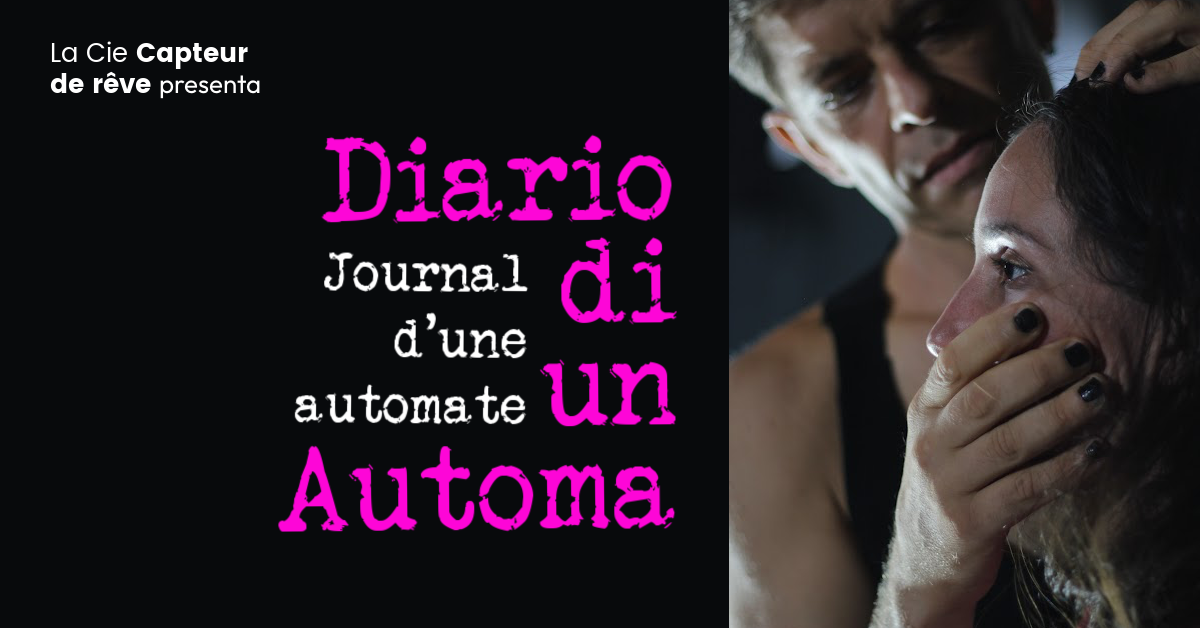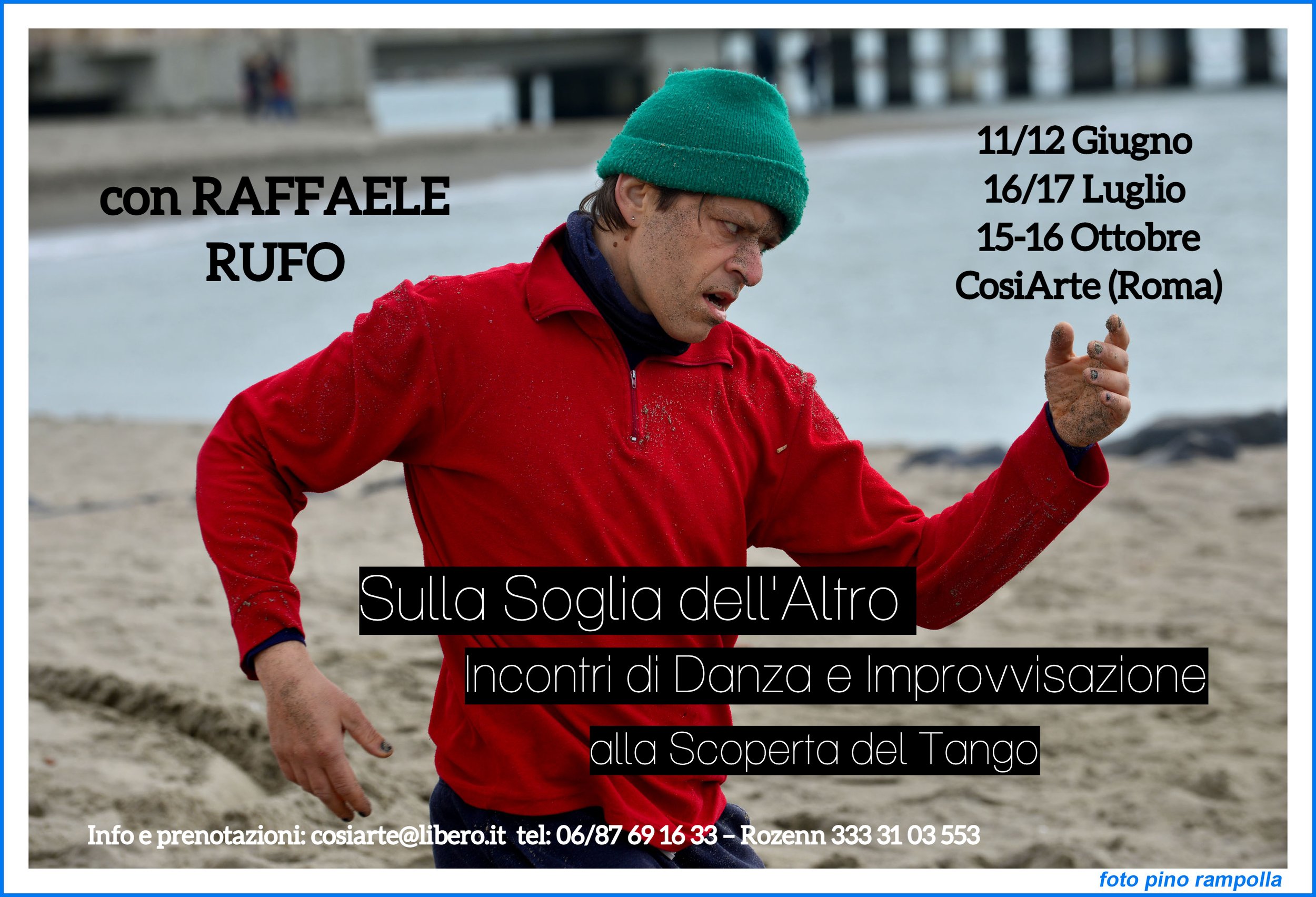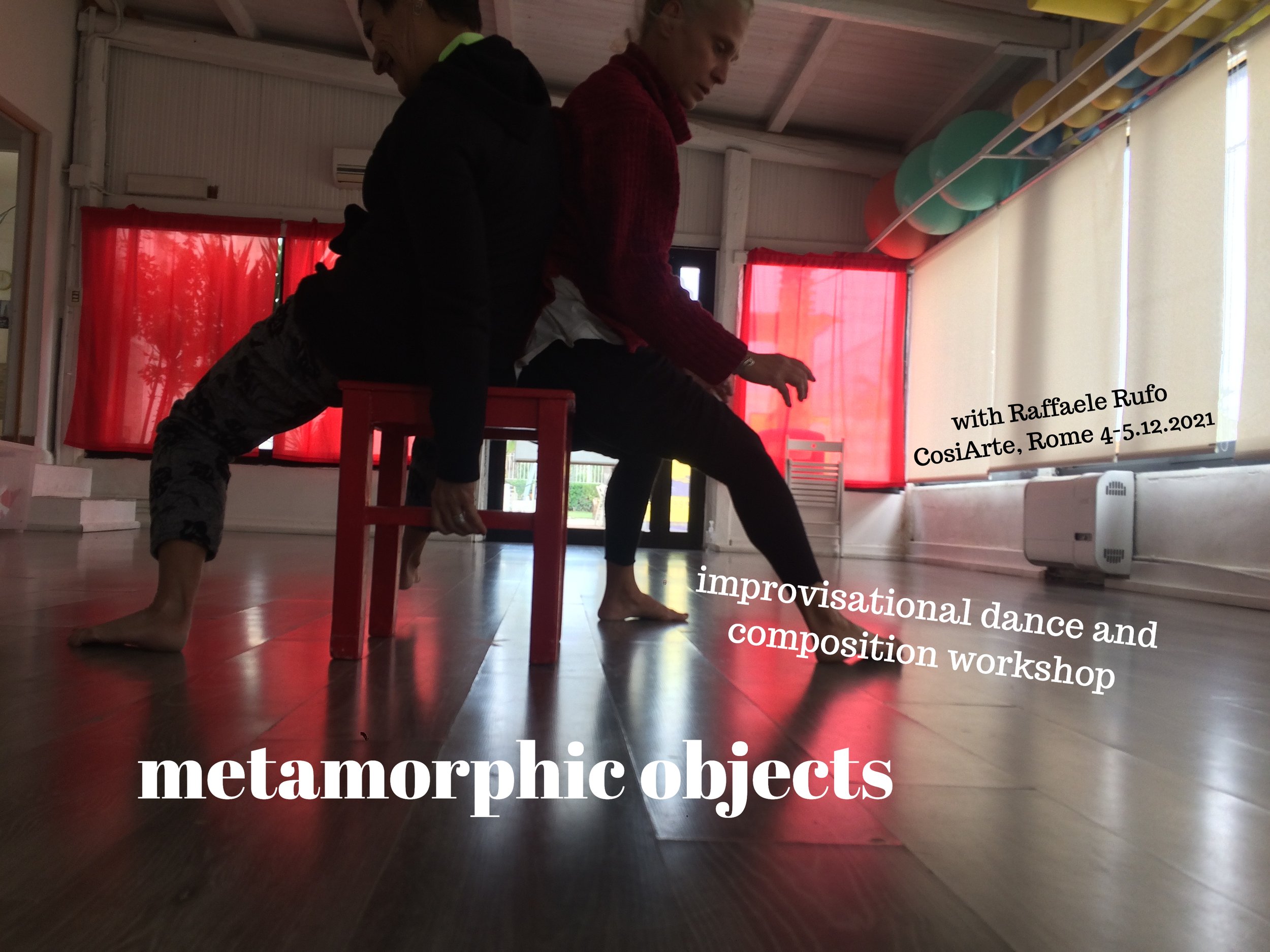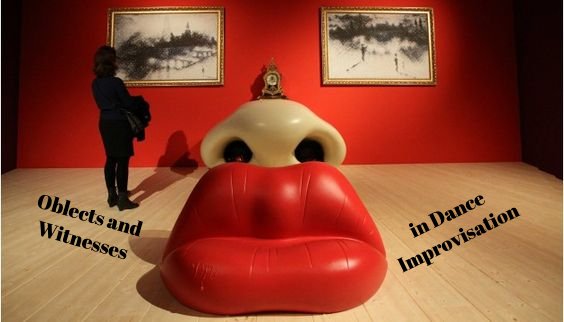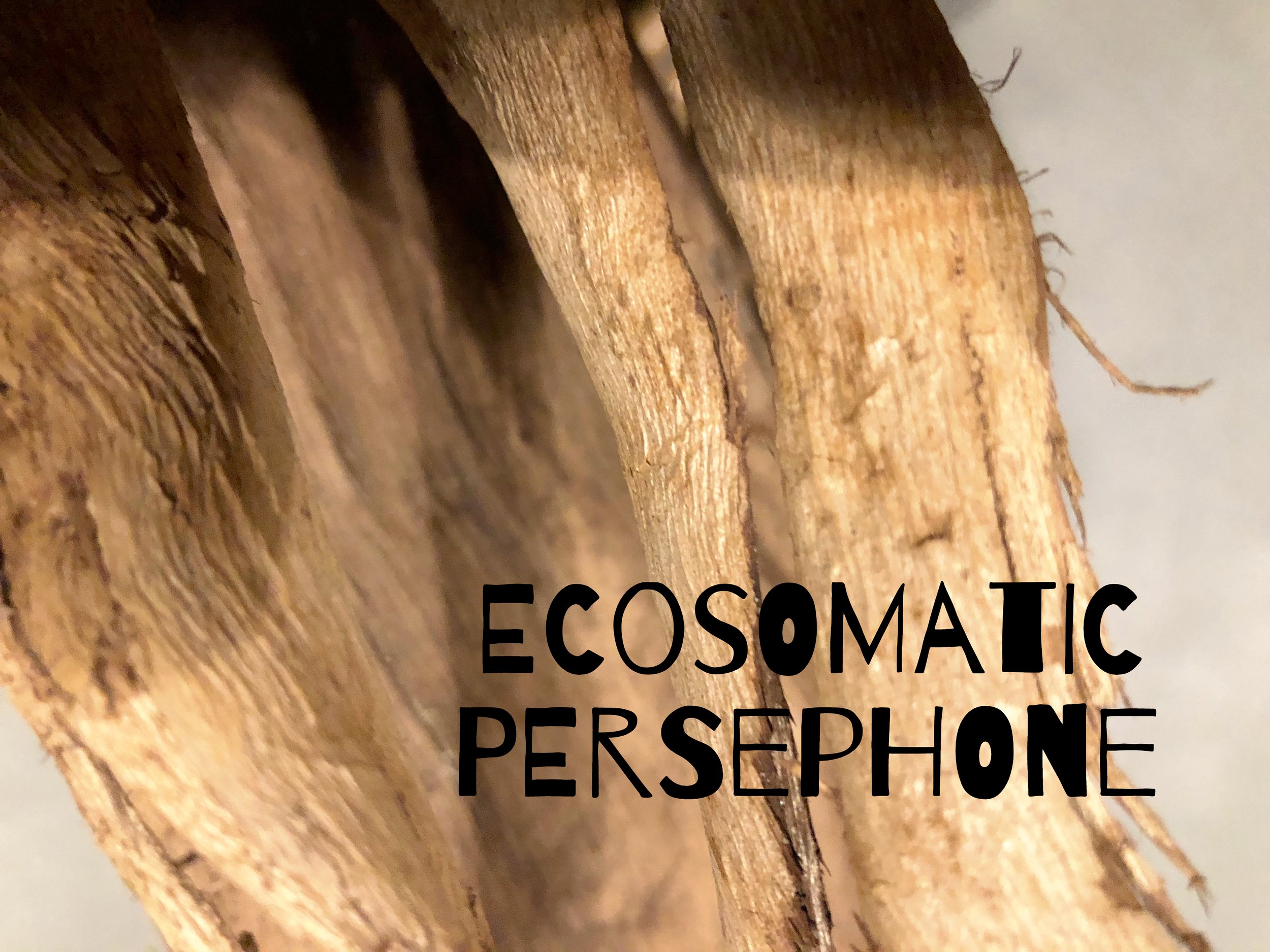Improv-Performance: Current and recent projects
JOURNAL D’UNE AUTOMATE: Theatre Piece, Creative Development & Performance (Compagnie Capteur de Reve, 2022-23)
ECOSOMATIC PERSEPHONE (with Flavia Gallo): Performance Lecture (9th Conference of the International Platform for Performer Training, Fondazione Orizzonti d’Arte – Chiusi, Italy, 12-15 January 2023)
THRESHOLDS OF THE OTHER: Intensive Workshops Series - Between Somatics, Dance and Theatre (CosiArte, Rome, 2021)
METAMORPHIC OBJECTS: Intensive Workshop (CosiArte, Rome, 2020)
OBJECTS AND WITNESSES IN DANCE IMPROVISATION: Online Course (2020)
Meeting the world halfway: Embodying connections in improvisational dance and performance
The key principle guiding my improvisational dance and performance practice is that movement and learning are experiences of embodied ecological connection: with one’s own inner and outer movement, with someone else’s movement, with the space in which we are moving, with sounds and objects we are moving with and with the movement of more-than-human living beings and systems around us. Touch has a central role as a sensory and affective medium between our inner and outer worlds: both through the physical contact between our body and the world and by intercepting the vibrations that are transmitted across the apparently empty space between body and world. By reclaiming the ancient reciprocity between the sensing self and the sensuous world, improvisational dance (in its different forms) can destabilise our attachment to identity and activate participatory modes of embodied interaction that promote intimacy, diversity and creative co-existence. Approached in this way, performance works as a door for meeting the world halfway: not as an assemblage of bodies existing outside the body of the artist, but as a bodying process through which the movement of becoming becomes perceptible and affective both for the artist and for the public. Performance is the carnal making of this asymmetric relation between what is imagined and what is experienced in an in-between space of danger and vulnerability.
Dancing on the Threshold of Otherness
My interdisciplinary approach to dance as an encounter on the threshold is the result of a long and in-depth process of research and contamination of Argentine Tango with Contact Improvisation, Dance Theatre and other contemporary forms of improvisational dance. Over the years I have matured the intention to collaborate with other dance and theatre artists to explore through improvisation the possibility of feeling in the feeling of the other to reach a condition of intensified perceptiveness and learn to dwell consciously in the spaces between ‘touching and being touched’, ‘moving and being moved’, ‘dancing and being danced’. Working in this direction, I have begun to develop creative and educational material to deepen three key steps in the encounter with the other: 1) refine body awareness between interiority and openness to the world; 2) follow the spatial and temporal evolution of the encounter; 3) inhabiting the threshold as a juncture for creative expression.
There are different forms of dance of popular origin which, like Argentine Tango, engage the body as a channel of sensory interpenetration between the artist's interiority and the flesh of the world: from Flamenco in Spain to various trance dances such as the Sabar in Senegal and the Pizzica in the South of Italy. In these dances there is no design of the mind to direct the body: to dance is to connect in order to be led by a greater life force. Borrowing the language of Flamenco, to dance is to let oneself be possessed by the demon (the "duende" described by Garcia Lorca) to make the invisible visible. Studying the Argentine Tango, a dance based on the duo and on rituality, I have discovered a way to access this state of intensified perceptiveness through intimate contact, deep listening and movement with the other. The kinaesthetic-tactile-affective experience of the dance partners is approached in a dynamic relationship of exchange with the collective space of dance. Playing, breaking, recomposing and expanding the relational, spatial and rhythmic principles of Tango, I have started to articulate an interdisciplinary language that engages the attentional and expressive abilities of the dancers by leveraging the organic becoming of their encounter. The approach that emerges from the contamination of Tango with Contact Improvisation, dance improvisation and Dance Theatre calls into question the attachment to established forms and attitudes in defense of a singular identity. Dance as an encounter on the threshold concretizes our metamorphic potential inside and outside the boundaries of the various disciplines to which we belong.
My recent artistic engagement (2022-) with sensory and imaginative thresholds and heightened perceptiveness is structured through the project ‘Sulla Soglia dell’Altro’ (Thresholds of the Other), a series of workshops and residencies developed in collaboration with the ‘Humanitas Mundi’ research ensemble (Rome) to weave the embodied connections between somatics, dance and theatre.
Performing Publicness
The other correlated aspect of my improvisational performance practice is the engagement with publicness and public spaces. In October 2015 I moved to Melbourne, in Australia, to conduct a PhD at Deakin University. Between my arrival and that of my family in July 2016, I approached the city and particularly the Central Business District of Melbourne as the stage for a learning process based on participant observation and the recording of sensory raw material. In particular, I rehearsed over and over again a specific script: arriving on a train at Flinders St Station, walking across the platform and the foyer, ‘touching off’ my traveling card, approaching the pedestrian crossing, stopping at the red light, crossing with the green, getting to the other side of the street as quick as possible, reaching the pavement. One thing leading to another thing. A river of people and lights and noises–or of lack thereof–whose water I feel unable to touch. A river that moves me from the outside without asking me where I want to go and why. I also spent countless hours observing, taking photos and filming the body movement of people crossing the street in that specific site and listening and recording their voices and the sound loop of the traffic lights.
As a migrant, a seeker and a dancer my amorphous body wanted to be sensorially and affectively moulded by the encounter with the city–not just metaphorically: I want to have a dance with the city. But how can I let the city teach me how to dance with it? How can I change the frame of my exploration to let this improvised dance of drama and attunement occur? I have been wandering in the city looking for who I am, what I can do in this place and for this place, searching for a platform for meaningful living and inspired creating. But how can I find a way to connect with the chaos I perceive around me, so that I do not become that chaos, so that that chaos can become the frame for my creative investigative practice? Through the combination of exploring the city and inquiring into Argentine Tango, a duet dance form structurally based on the improvised relation between dancers and with their broader context, I have started to develop a site-responsive artistic approach to performance and publicness. As I walk and I observe, or witness or participate, the city emerges as a reflex of my soul, a public stage, a process of noticing and eventually a creative process that engages my everyday life as well as my dance and through which the evolving lessons of the everyday is taught - to me and through me. Performing publicness involves exploring the ways in which the outside world is affecting me all the time, and how I might notice, resist or yield to what is becoming available outside in an evolutionary process of making sense of what I am sensing through the body.
My artistic engagement with public spaces and publicness is described and discussed in ‘Crosswalk: Performing the city as a learning experience’, an article published in 2007 in the Journal of Public Pedagogies, vol. 2, pp. 42-53, DOI: https://doi.org/10.15209/jpp.1127.
Objects and Witnesses in Improvisational Dance
Is it possible to have a physical and affective encounter with an “object”? This is an improvisational-compositional-pedagogical project involving solo work, group practice and video-making. I engage a range of improvisation embodiment techniques for encountering objects as the witnesses of our dance. In this sensuous journey, the space between the inner and the outer worlds of the dancer is approached as a mirror through which the presence of objects can be revealed and expressed imaginatively as an experience of reciprocity and co-creation.
“Reciprocity is the very structure of perception. We experience the sensuous world only by rendering ourselves vulnerable to that world.” These words by geo-philosopher and cultural anthropologist David Abram refer not only to the radical interconnection between humans and other living beings and systems we have learned to call “nature”. They also refer to our relationship with the things around us that carry the earthly signs of aliveness and participate in our perceptual experience. However, we are culturally patterned to neglect the interplay between the perceiving self and the perceived world. What is sensuous about the human-built spaces we inhabit surrounded by objects we approach as “inanimate” carriers of utilitarian functions? Working with touch, weight, axis, gravity, space, and other sensory mediums of improvisational dance and composition, this project aims to explore how the emergence of an intimate relationship with the vibrancy of matter challenges the assumed duality between the human and the nonhuman. Shaping into the body of objects and witnessing their presence and responsiveness can be conducive to the transformative experience of being danced by the movement of becoming. It can be conducive to the sensory realisation that there are no objects but only relations.
During the first Coronavirus lockdown (March-May 2020), confined in my small flat in the periphery of Milan, with my wife and our two little kids, I was urged to question my relationship with Tango and Contact Improvisation - the two improvisational dance forms I have studied and taught in the last decade. I was led to ask: What can be learnt about embodied connection in a world where physical touch is forbidden? To rediscover my dancing body in the confinement of the domestic space, I started to explore the connection with objects I had never before considered as potential dance partners. I also started to engage with distant dancers I could not touch but I could connect with through the medium of the screen.
To keep sharing my research with other dancers during and between lockdowns, I have used Zoom video-conferencing to facilitate an improvisational practice. The practice has been running since April 2020 with an international group of dancers as a series of thematic programs. The process began with a focus on the possibility of reducing the physical-affective distance between participants through somatic attentional practices (‘Dancing Together Alone’, April-May 2020). After the lockdown I/we worked on how somatic and improvisational movement principles and tools can help us face the disorientation characterising this challenging historical period by connecting with our body in integral and constructive ways (‘Facing Disorientation’, May-July 2020). During the second lockdown, I/we embraced more explicitly the somatic-imaginative potential of an embodied connection with the things that populate our human-built world (‘Objects and Witnesses in Dance Improvisation’, October-November 2020).
“The morning after the workshop, as I was exploring again the idea of resonance and dissonance, eyes wide shut, I followed the song of what sounded to me like a huge bird with a big voice. When I opened my eyes to meet this beast, I found that it was a flock of birds performing a ballet in the sky.”
— Virginie Bournaud, dancer and teacher based in Paris
My experience of leading a group dance improvisation practice on Zoom during the first long Coronavirus lockdown (March-May 2020) is described and documented in ‘Dancing Together Alone: What Can Be Learnt About Connection When Touch Is Forbidden?’. In this video-essay, published in July 2020 in the Journal of Embodied Research, vol. 2(3) (27:50), special edition on ‘Embodiment and Social Distancing: Practices’ (DOI: https://doi.org/10.16995/jer.66), I reflect on how somatic tools and strategies can help us engage video conferencing as a window for connecting with distant bodies.
Pedagogical Practice
My pedagogical practice engages with a wide range of somatic and improvisational principles, tools and strategies for discovering the never ending possibility of the body, challenging habits and developing new ways of moving and thinking. The training follows six main guidelines:
Connecting dance improvisation with somatic movement
Connecting solo, partnering and group work
Connecting the sense of touch and space in the experience of movement
Connecting embodied imageries in the experience of movement
Connecting with the physical memories of the body
Connecting bodily states with feelings states
Classes are delivered with a participatory and imaginative approach and in a safe and stimulating group situation. My pedagogy integrates verbal instructions, physical demonstrations, individual and shared practice and feedback from participants. I teach in English, Italian and French. For expressions of interest and for more info, you can send an email to raffaele.rufo@gmail.com
Liquid Lead Movement: Video Lessons (A Short Selection)
Liquid Lead Movement is a training practice and educational approach which integrates creative expression, ecological connection and mutual growth by exploring and communicating the value of the felt sense of movement in our changing lives. Liquid Lead Movement is designed mainly for dancers, movers, performers and somatic practitioners with the goal of supporting their personal and professional development in four main areas of competence: kinaesthetic, expressive, communicative and educational.
Liquid Lead Movement draws on somatic movement disciplines (such as the Feldenkrais Method) to engage the immediate sensory experience of movement and touch through methods, tools and strategies of kinaesthetic listening and movement improvisation which help participants connect with self, others and the environment in creative and integral ways. The practice is inspired by the sensations, imageries, rules of engagement and movement dynamics experienced in the Argentine tango dance. These resources are associated and integrated with the kinaesthetic exploration of the moving body and its tactile, spatial and imaginative relationships characterising contact dance improvisation and other forms of contemporary dance improvisation.
Four Areas of Movement Inquiry
MOVEMENT WAVES: Movement as an experience of accumulation and release
When experienced somatically, movement feels like an infinite series of waves travelling through the ocean and accumulating energy that will then be released onto the shore. The next wave is already growing while the previous one is about to break - and the cycle goes on and on. The interval of time between accumulating and releasing and the ensuing rhythm of movement are inevitably connected with the endless alternation of breathing in and out. As a temporal interval, breath is also a space of potential and opportunities. If we learn to wait, notice and engage what is happening in the moment we can be changed.
DANCING TREES: Movement as an experience of expansion and condensation
Like trees, human bodies are the meeting point between the earth and the sky. As the branches move upward towards the sky, the roots are moving downward towards the earth. We too as humans can feel that, as we go down, we are also going up and that, as we go up, we are also going down. As we expand, we are also condensing and, as we condense, we are also expanding. In this process of listening and connecting with internal and external spaces and with different kinaesthetic qualities, our movement becomes a meeting point - not only between the earth and the sky, but also between discipline and freedom.
CHEMICAL REACTIONS: Movement as an experience of tension and flow
Flow is not the absence of tension. Tension is not the absence of flow. Tension and flow exist as in-between spaces, as intervals through which one element is letting go so that another element can emerge. They are names for the dynamic and responsive passages between a moment of resistance and another moment of resistance, between a moment of ease and another moment of ease. Movement is an experience of modulation of the transmissions of energy which occurs through such passages - a transmission which sets up a chemical reaction while announcing the possibility of a change of state, both bodily and affective.
MAGNETIC POLES: Movement as an experience of resonance and dissonance
From the perspective of physics, resonance and dissonance are the effects of a force working on the body from the outside. Resonance is the expansive effect of sonic vibrations synchronising with the frequency of the body that is touched by them. Dissonance is the absence of such synchronisation, or, the simultaneous presence of different frequencies. This phenomenon can be associated with the experience of movement. External vibrations, perceived as sensory inputs, alter our internal sense of movement by touching our body through air and skin. This process produces physical effects while changing also how we feel.
***
For references and quotes from the text of this page, please cite Raffaele Rufo, 2022, ‘Meeting the World Halfway: Embodying Connections in Improvisational Dance and Performance’ , www.raffaelerufo.com/improv-performance
